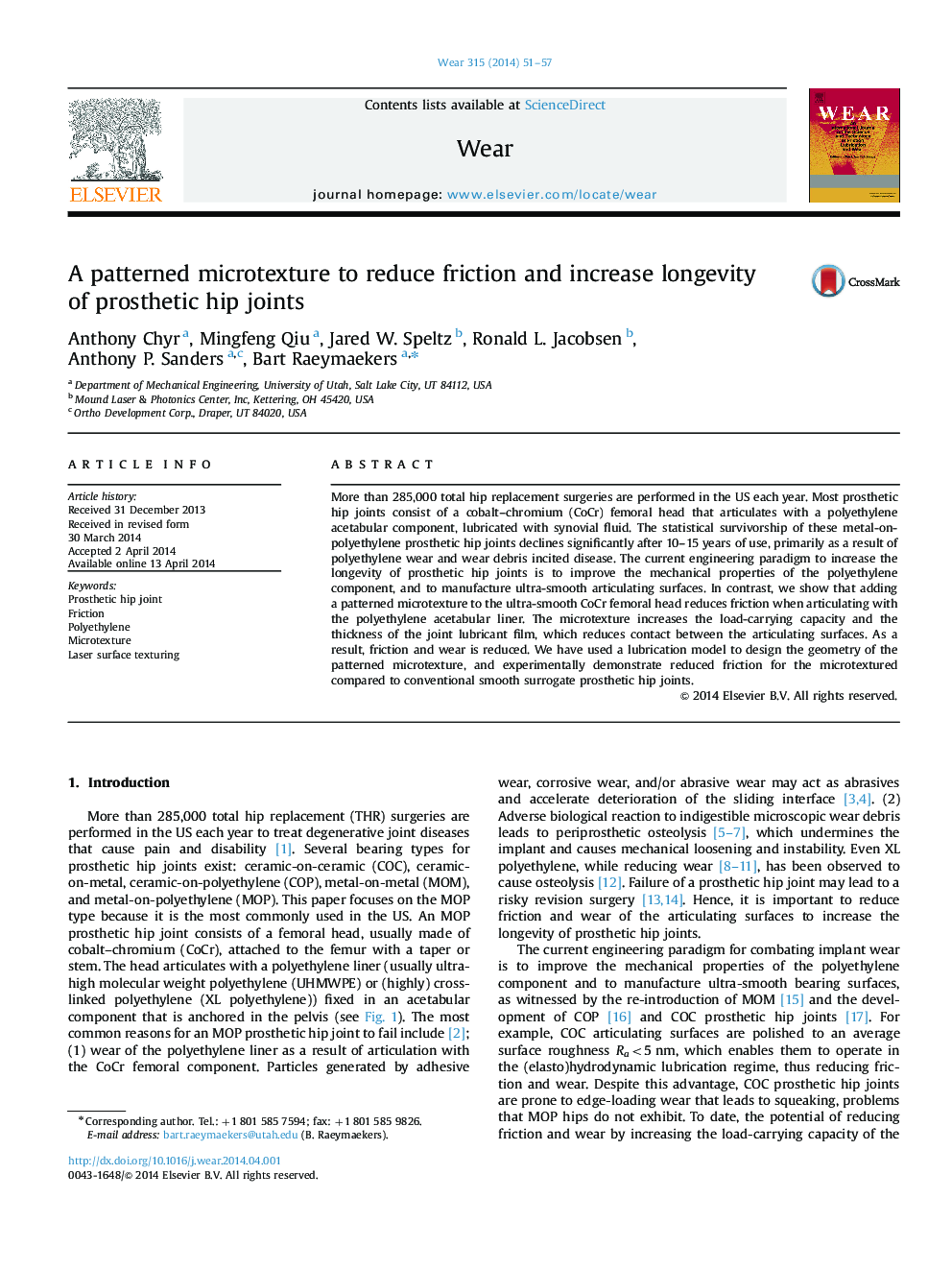| Article ID | Journal | Published Year | Pages | File Type |
|---|---|---|---|---|
| 617411 | Wear | 2014 | 7 Pages |
Abstract
More than 285,000 total hip replacement surgeries are performed in the US each year. Most prosthetic hip joints consist of a cobalt-chromium (CoCr) femoral head that articulates with a polyethylene acetabular component, lubricated with synovial fluid. The statistical survivorship of these metal-on-polyethylene prosthetic hip joints declines significantly after 10-15 years of use, primarily as a result of polyethylene wear and wear debris incited disease. The current engineering paradigm to increase the longevity of prosthetic hip joints is to improve the mechanical properties of the polyethylene component, and to manufacture ultra-smooth articulating surfaces. In contrast, we show that adding a patterned microtexture to the ultra-smooth CoCr femoral head reduces friction when articulating with the polyethylene acetabular liner. The microtexture increases the load-carrying capacity and the thickness of the joint lubricant film, which reduces contact between the articulating surfaces. As a result, friction and wear is reduced. We have used a lubrication model to design the geometry of the patterned microtexture, and experimentally demonstrate reduced friction for the microtextured compared to conventional smooth surrogate prosthetic hip joints.
Related Topics
Physical Sciences and Engineering
Chemical Engineering
Colloid and Surface Chemistry
Authors
Anthony Chyr, Mingfeng Qiu, Jared W. Speltz, Ronald L. Jacobsen, Anthony P. Sanders, Bart Raeymaekers,
